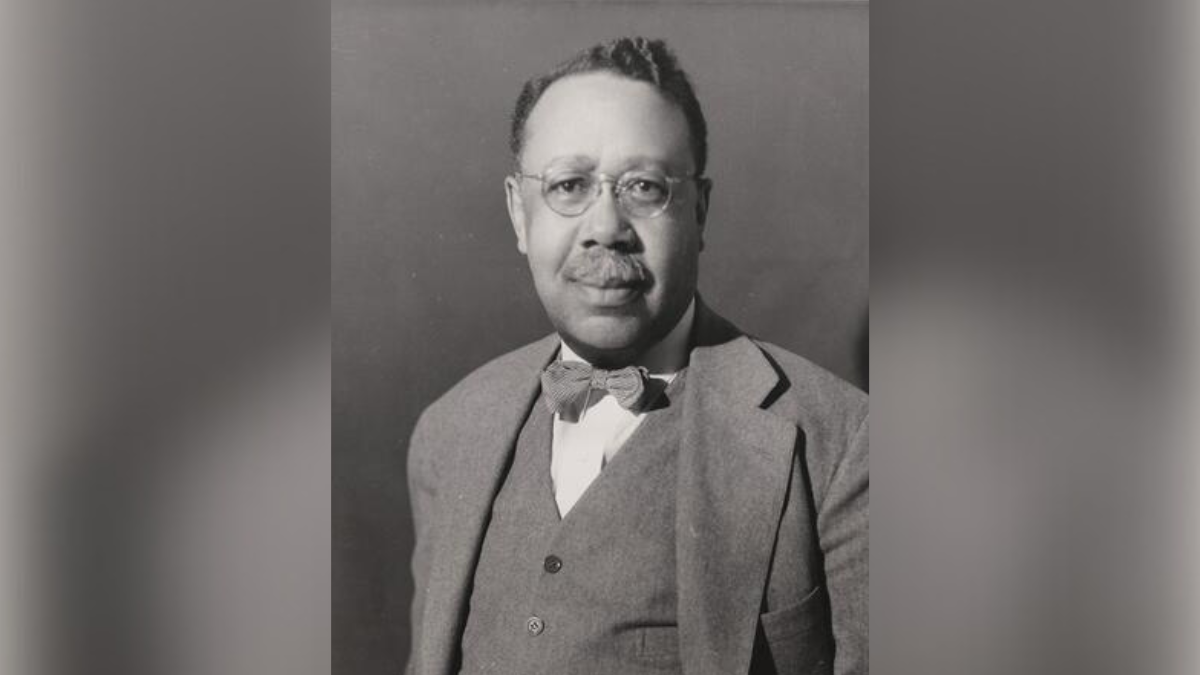(Photo credit: Harvard University Archives)
In honour of Black History Month, we are pleased to feature a series of stories celebrating the contributions Black individuals have made to our understanding of infectious diseases and how to prevent and treat them. Each story is written by a member of EPIC’s Trainee Advisory Committee. Check out the first story in our series here.
February 21, 2024
By Manisha Kabi
William Augustus Hinton, an American bacteriologist, pathologist and educator, was the first Black professor in the history of Harvard University. He pioneered a simple, quick and unambiguous syphilis test which was adopted by the United States Public Health Service in 1934.
Hinton was born in Chicago in December 1883 to Augustus Hinton and Maria Clark, both former slaves. He grew up in Kansas City, Missouri and studied at the University of Kansas from 1900 to 1902. He later transferred to Harvard, graduating with a Bachelor of Science in 1905. After graduating, Hinton taught at colleges in the south and kept up with his bacteriology studies during the summer at the University of Chicago. In 1909, he entered Harvard Medical School where he turned down a scholarship reserved for African American students. Instead, he competed for and won the esteemed Wigglesworth Scholarship, which was available to all Harvard students. Hinton completed his M.D. in 1912 after only three years.
Hinton aspired to a career in surgery but racial prejudice prevented him from pursuing medical internships and surgical residencies in Boston-area hospitals. For three years, he volunteered as an assistant in the pathology laboratory at Massachusetts General Hospital where he conducted autopsies on individuals suspected of having syphilis and engaged in research on the disease. He then worked at the Wassermann Laboratory, the Massachusetts State Laboratory for communicable diseases at Harvard Medical School.
In 1927, Hinton developed a flocculation test for laboratory detection of syphilis. The test is based on the idea that when an antibody and the antigen it recognizes are mixed together, they clump together to form solid flakes that are visible to the naked eye. The Hinton test was faster, more sensitive and specific compared to other tests used in the late 1920s and 1930s. Hinton also collaborated with a colleague, John A.V. Davies, to develop another syphilis test using spinal fluid, later known as the Davies-Hinton test.
These improved diagnostic methods became revolutionary advancements in the field of medicine.
In 1946, after 25 years of teaching, Hinton was appointed as an instructor in bacteriology and immunology at Harvard Medical School. His dedication led to a promotion to the rank of clinical professor in 1949, making him the first African American to hold such a position at Harvard University. Remarkably, he achieved this milestone just one year before his retirement. Hinton also went on to serve as the assistant director of the Division of Biologic Laboratories and chief of the Wassermann Laboratory, then part of the Massachusetts Department of Public Health, for 38 years.
Hinton met his future wife, Ada Hawes, while they were both working in Langston, Oklahoma. The couple had two daughters, Anne Hinton Jones, and Jane Hinton, who, in 1941, co-developed the Mueller-Hinton agar that is still used in bacteriology laboratories today.
William A. Hinton passed away in 1958 due to complications related to diabetes. In his will, he left $75,000 in savings to establish a scholarship fund for Harvard graduate students, honouring his parents and the values they instilled in him.
Hinton’s legacy went beyond his life-saving discoveries and inventions. Under his supervision, the number of state-approved laboratories grew from 10 to 117, significantly increasing the number of blood and tissue samples that could be processed. He also started a women-only school for laboratory technicians, the first of its kind. By training technicians who were employed across the country, the school expanded career opportunities for women in the field.
To honour Hinton’s groundbreaking contributions, the Massachusetts legislature officially renamed the state laboratory building as the Dr. William A. Hinton Laboratory in 1975. In 2019, his portrait was added to Harvard Medical School’s Waterhouse Room, which previously only featured portraits of former Harvard Medical School Deans, all of whom were white.
Recommended reading


